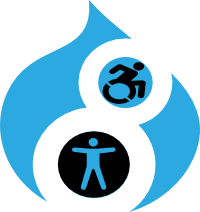Drupal 8’s Accessibility Advantage: Alt Tags & Defaults
on

You may be familiar with the alternative text (alt) attribute that appears in <img> tags. The purpose of alt attributes is to provide a description of the contents of an image file. This description will appear when a user cannot see the image in their browser, when the image is searched on search engines, and in screen readers. But it is very easy to forget to include this text in your images and that is bad news for accessibility and SEO.
In Drupal 8, alt attributes are now set to required by default on images. The same goes for such elements like user images and image fields. Such a task in Drupal 7 would have required you to download modules or modify the code yourself.
This is a big win for accessibility, as the alt attribute is often overlooked on websites, but is essential to many disabled users. And really the only downside is that users have to spend a bit of extra time writing out alt text for those images.
Alt text is really the low hanging fruit of accessibility. So often it is ignored by web developers and content editors when creating a site. Having the defaults for alt text enabled by default just makes it easier for content editors to produce better sites. This default also makes Drupal 8 conform closer to Authoring Tool Accessibility Guidelines (ATAG) 2.0.
Share this article
About The Author
Mike Gifford is the founder of OpenConcept Consulting Inc, which he started in 1999. Since then, he has been particularly active in developing and extending open source content management systems to allow people to get closer to their content. Before starting OpenConcept, Mike had worked for a number of national NGOs including Oxfam Canada and Friends of the Earth.




Add new comment